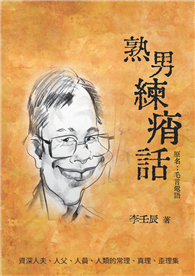Since the turn of the century, low-income African countries have undergone a process of mining industrialization led by transnational corporations. The process has been sustained by an African Mining Consensus uniting international financial institutions, African governments, development agencies, and various strands of the academic literature. The Consensus position is that mining industrialization can drive transformative processes of social and economic development in low-income African settings. For this, state-owned enterprises and local forms of labour-intensive mining are deemed unsuitable. The former is characterized as corrupt and mismanaged, and the latter as an inefficient, subsistence activity with links to conflict financing. The Consensus holds, instead, that mining industrialization should be led by the superior expertise and efficiency of transnational corporations.
Disrupted Development in the Congo reveals the fragile foundations on which this Consensus rests. Through an in-depth case study of mining in the Democratic Republic of the Congo, Ben Radley details how foreign corporations have been prone to mismanagement, inefficiencies, and rent-seeking, and implicated in fuelling conflict and violence. He also documents how structural impediments to the transformative effects of mining industrialization in low-income African countries occur irrespective of ownership and management structures. Based on the findings presented, Radley urges a move away from the market-led logics underpinning the Consensus. In the mining sector itself, he argues that efforts to mechanize labour-intensive forms of local mining better meet the needs of low-income African economies for rising productivity, labour absorption, and the domestic retention of the value generated by productive activity than the currently dominant but disruptive foreign corporate-led model. Part of this title is published open access. This part is made available under a Creative Commons Attribution-Non Commercial-No Derivatives 4.0 International licence. It is available to read and download as a PDF on the Oxford Academic platform.| FindBook |
有 1 項符合
Disrupted Development in the Congo的圖書 |
 |
Disrupted Development in the Congo 作者:Radley 出版社:Oxford University Press, USA 出版日期:2024-02-16 語言:英文 規格:精裝 / 普通級/ 初版 |
| 圖書館借閱 |
| 國家圖書館 | 全國圖書書目資訊網 | 國立公共資訊圖書館 | 電子書服務平台 | MetaCat 跨館整合查詢 |
| 臺北市立圖書館 | 新北市立圖書館 | 基隆市公共圖書館 | 桃園市立圖書館 | 新竹縣公共圖書館 |
| 苗栗縣立圖書館 | 臺中市立圖書館 | 彰化縣公共圖書館 | 南投縣文化局 | 雲林縣公共圖書館 |
| 嘉義縣圖書館 | 臺南市立圖書館 | 高雄市立圖書館 | 屏東縣公共圖書館 | 宜蘭縣公共圖書館 |
| 花蓮縣文化局 | 臺東縣文化處 |
|
|
圖書介紹 - 資料來源:博客來 評分:
圖書名稱:Disrupted Development in the Congo
內容簡介
作者簡介
Ben Radley, Lecturer in International Development, University of Bath
A Philosophy of Climate Apocalypticism: In and Against the World
A Philosophy of Climate Apocalypticism: In and Against the World
Global Climate Change and Terrestrial Invertebrates
Ethnography: The Basics
Harvesting the Waves: How Blue Parks Shape Policy, Politics and Peacebuilding in the South China Sea
Handbook of Carbon Sensors: Understanding and Applications
Children’s Literatures, Cultures and Pedagogies in the Anthropocene: Multidisciplinary Entanglements
Snow Optics
Recreational Colonialism and the Rhetorical Landscapes of the Outdoors
Recreational Colonialism and the Rhetorical Landscapes of the Outdoors
A Philosophy of Climate Apocalypticism: In and Against the World
Global Climate Change and Terrestrial Invertebrates
Ethnography: The Basics
Harvesting the Waves: How Blue Parks Shape Policy, Politics and Peacebuilding in the South China Sea
Handbook of Carbon Sensors: Understanding and Applications
Children’s Literatures, Cultures and Pedagogies in the Anthropocene: Multidisciplinary Entanglements
Snow Optics
Recreational Colonialism and the Rhetorical Landscapes of the Outdoors
Recreational Colonialism and the Rhetorical Landscapes of the Outdoors
|










